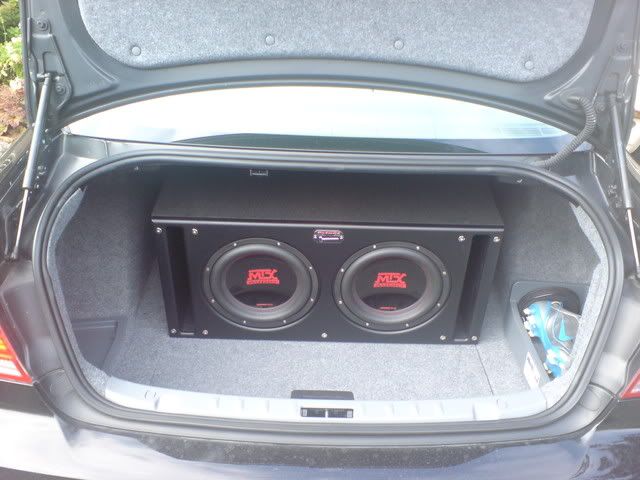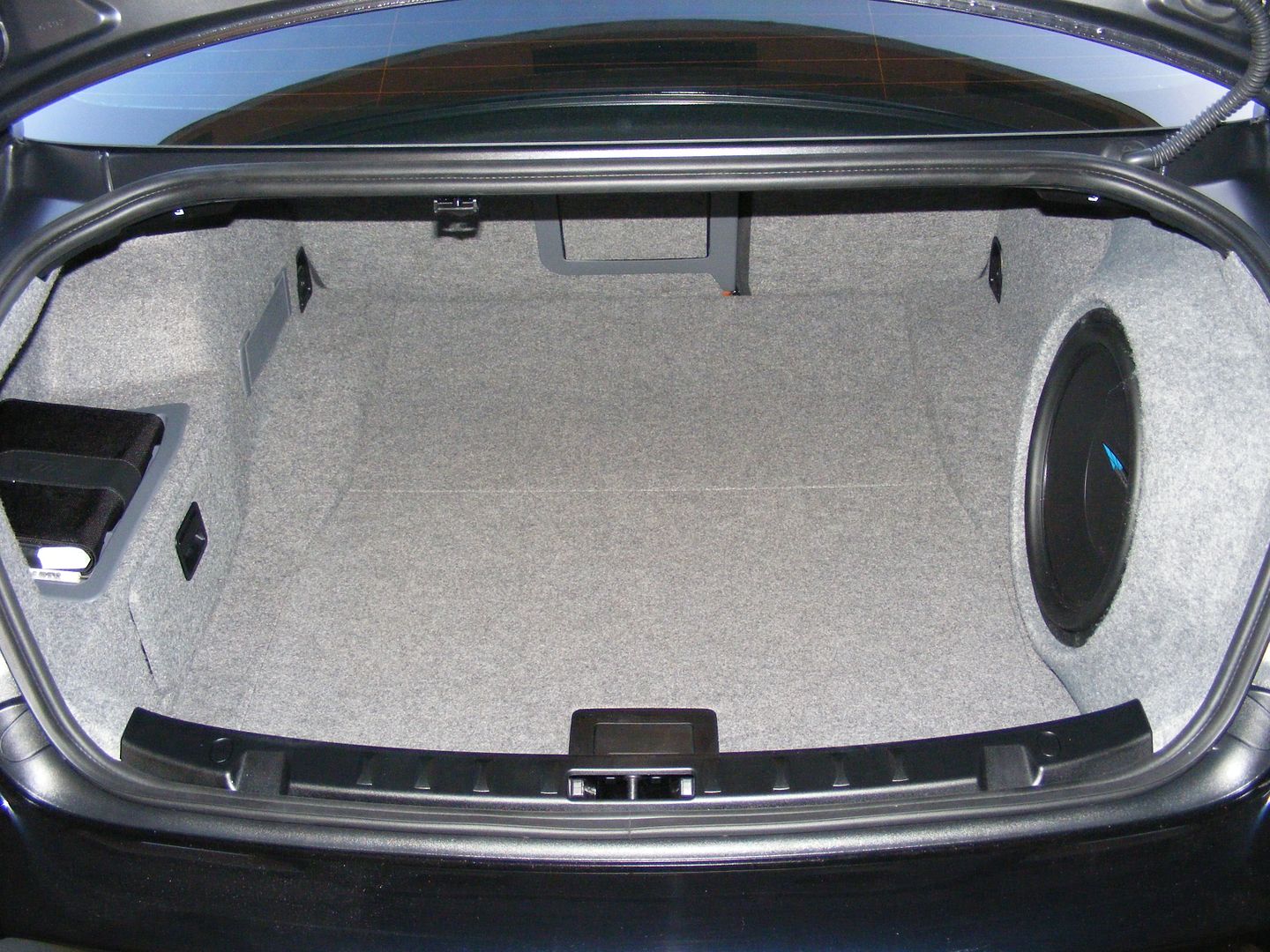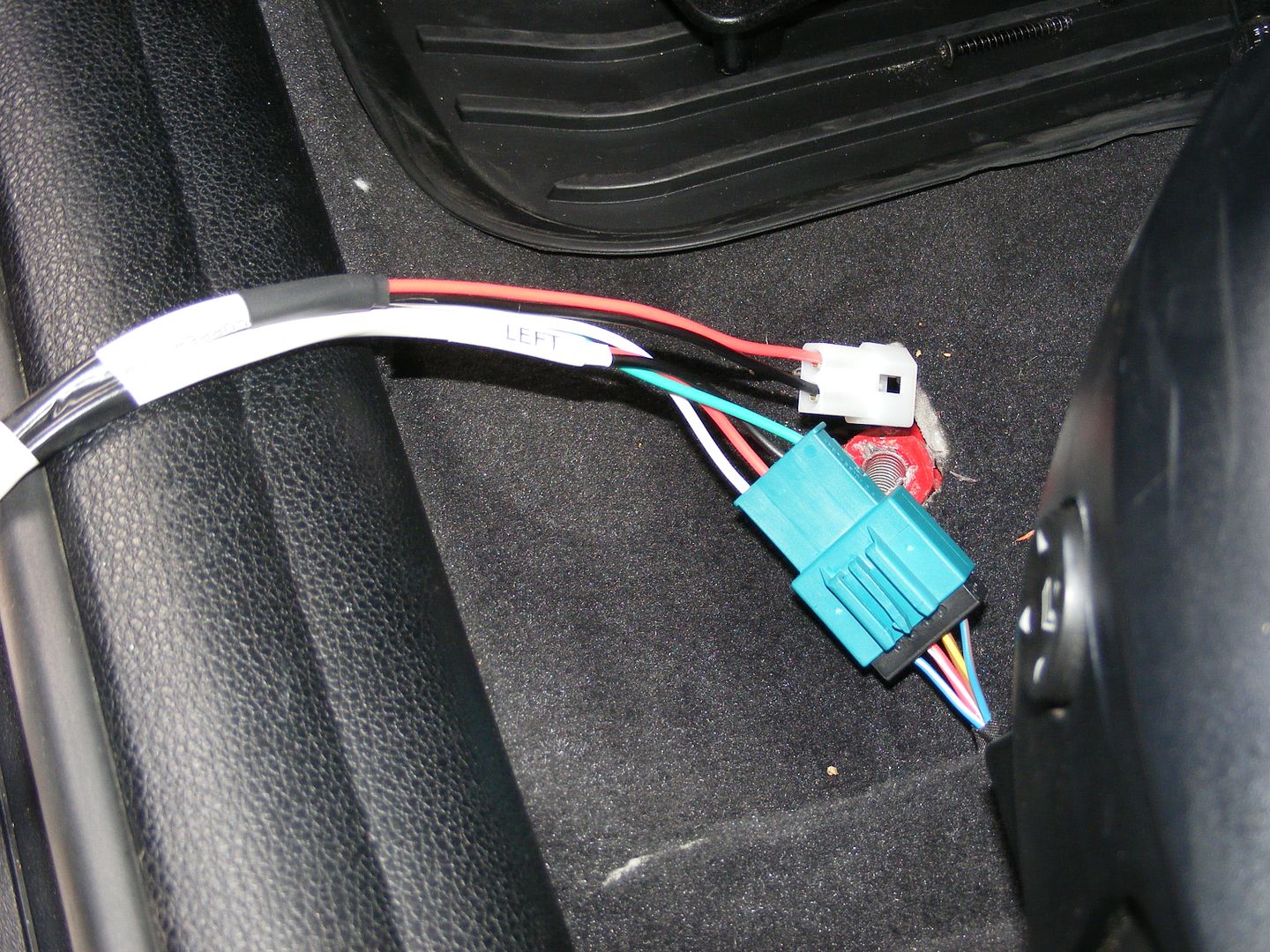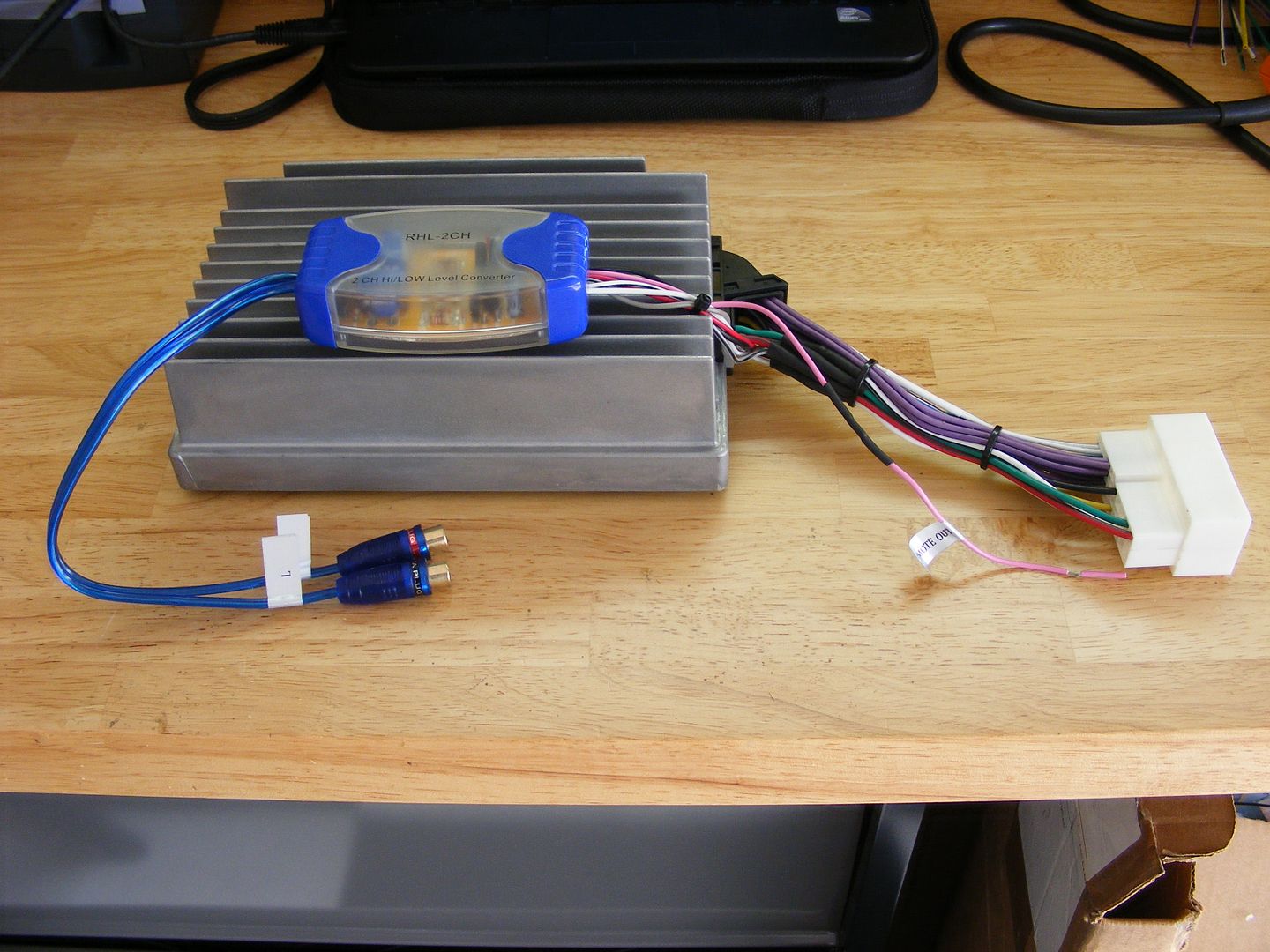Rough draft for your subwoofer section:
Subwoofer Locations:
1.) Under Seats.
The enclosures under the seats can be outfitted with specialized aftermarket subwoofers (Earthquake SWS-8) that are capable of decent low-end output. Don’t expect “earth-shaking” bass, but most people seem to be satisfied with the results from this upgrade. The Earthquakes do well with 100 – 150W per channel. They can be run mono, but a stereo signal will give better separation in the mid-bass range. Speaking of mid-bass, these speakers don’t handle this part of the spectrum particularly well. If you’re planning on upgrading to a trunk sub, you’re better off installing dedicated mid-bass speakers in this location.
Example of SWS-8 Installation:
 2.) In Trunk.
2.) In Trunk.
The trunk itself is a “sealed” enclosure. Think of it as a large metal box sitting in your living room, and then placing the subwoofer enclosure inside of it. It is going to be difficult to get any appreciable output outside the metal box from any subwoofer set-up inside it because the metal box (trunk) is so well insulated from the factory. Thankfully, a phenomenon called
cabin gain helps a great deal in amplifying the output of the subwoofer so that it can still get plenty loud inside the passenger cabin of the car. However, there are side effects. The more powerful the subwoofer set-up, the more the trunk panels will want to vibrate. This results in annoying rattles. These rattles can be heard inside the car, but also outside. There may also be a problem with the gas cap spring mechanism becoming damaged from excessive vibrations of the gas cap door.
In order to allow more sound to enter into the cabin, you can open up the ski-hole if your car is equipped with it, or you can fold down the seats, which may not be very practical however.
With the above in mind, there are three different types of trunk set-ups you can choose from:
a) Inside the storage area below trunk floor (not possible in 335 and M3 models). A 8 or 10” subwoofer and a custom enclosure can be fitted into the storage area. The advantage of this set-up is the usage of dead space, and that it is completely invisible. The disadvantage is that the output of the subwoofer is somewhat muffled by the trunk floor lid.
Example of Subwoofer in storage area:

b) A standard subwoofer enclosure placed on the trunk floor. The enclosure itself can be “off the shelf” or a custom-built solution. The subwoofers can be faced toward the back of the trunk, or toward the cabin (results are usually better with the subs facing towards the rear). The disadvantages are the loss of trunk space, and excessive rattles. The advantage is the simplicity and the capability to produce a lot of “bang for your buck”.
Example of standard subwoofer enclosure in trunk:

c) A corner-loaded enclosure. The sub enclosure is “molded” into one of the trunk rear corners using fiberglass. The advantages of this set-up are efficiency and space savings. It hardly takes up any trunk space and the corner-loading effect “amplifies” the output of the single subwoofer to make it significantly louder than the same subwoofer in a standard enclosure. The other welcome side effects of this set-up are that it produces very little rattles and that the bass very easily blends with the front stage. Most sound quality oriented people prefer this type of set-up.
Example of corner-loaded enclosure:
 3. Behind Back Seat (Infinite Baffle).
3. Behind Back Seat (Infinite Baffle).
Here we place a subwoofer inside one of the walls of the metal box we call the trunk. The trunk becomes the enclosure. Using the proper subwoofer driver(s), this type of set-up can result in excellent sound quality, while requiring very little amplifier power, and producing the least amount of rattles. A good IB install will require very little EQ to have a relatively flat response between 20 and 100Hz.
Example of infinite baffle (IB) install:
 Integration into Stock Audio System:
Integration into Stock Audio System:
This assumes that no other audio upgrades are being done and that the subwoofer and amp are the only changes you are making to the stock system.
1. Base Audio:
You will have to tap into the full-range speaker level outputs of the Head Unit. The best place to do this is at the connection for the underseat woofers. The best method of doing it is to use a Technic harness connector as pictured below. No splicing, no cutting, fully reversible:

The signal can then be fed into an aftermarket amp via the high-level (or speaker level) inputs, if so equipped, or through an external LOC (line output converter), which will then give you a low-level signal via RCA for connection to the amp.
You will then need a switched 12V “remote” or “turn-on” signal for the aftermarket amp(s). If you are using an external LOC, make sure you get one with remote out, so you don’t need to worry about getting the remote signal elsewhere. If you don’t have that option, the most appropriate source is pin 13 at the back of the OEM head unit. You will need to run a wire from there to the amp location in the trunk. As an alternate, people have also used the cigarette lighter wiring, as well as the satellite radio fan wiring (which is conveniently located under the trunk floor, if you have it). As always, any splicing of OEM wiring is at your own risk!
2. HiFi & Logic 7:
The HiFi & L7 amps have dedicated, low-passed subwoofer outputs. The amps are located in the rear left corner of the trunk, under the gray plastic cover. You need to tap into these outputs, and feed them into a LOC (line output converter) which will convert the high level signal into low level signal so your aftermarket amp can use it. Some amps have built-in signal converters, but they rarely are designed for the relatively strong outputs of the HiFi, and especially the L7 amps. The last thing you want is damage your amp so always use external LOCs.
If available, always try to use forum member Technic’s add-on harnesses, which make the connections a snap and everything is fully reversible. He uses only the highest-quality LOCs, with built-in remote level outputs.
Technic HiFi Harness:

Technic Logic 7 Harness:
